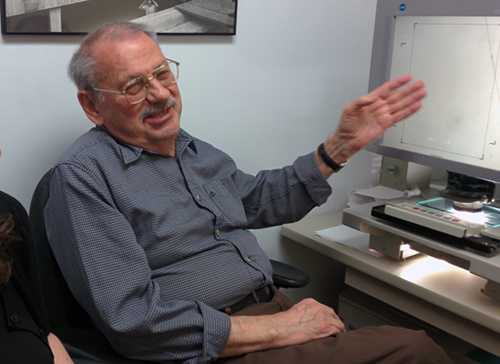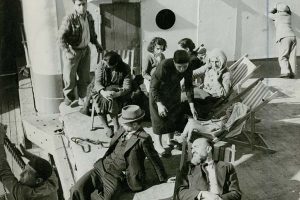
The JDC Archives Names Indexing Project: A Personal Retrospective
Archives volunteer Claus Hirsch shares personal and professional insights.
Type in the name and your family history unfolds. A genealogist’s dream. The JDC Archives has been spearheading an effort to digitize historical records of Jewish genealogical interest. Names of JDC aid recipients’ from voluminous lists throughout the world form the core of the project. A cadre of four volunteers, including myself, began the indexing work in January 2010. Six years later, joined by other volunteers, we remain committed to expanding the database. The JDC Archives Names Index, made possible through the work of dedicated volunteers, has become a most popular feature of the JDC Archives website. It now includes over 500,000 names, and has opened a window onto the past for many family researchers.
Among the many lists already indexed, are those of European Jewish refugees who escaped to Shanghai and who lived there during World War II. Working on the Shanghai files had great emotional appeal to me because of my own and my family’s wartime experiences as refugee Jews in Shanghai who received vital assistance from the Joint. My volunteer work at the JDC headquarters in New York City has allowed me to return this generosity. And it made possible for me to learn about the fates of my former refugee colleagues and neighbors after the war.
Sifting through JDC relief lists uncovers genealogical gems and important historical sources. Files of Hungarian Jewish émigrés from the mid-1950s, recorded on small index cards, include detailed personal information. Apart from allowing one to trace one’s family tree, these cards also provide a glimpse into Hungarian Jews’ daily lives by documenting their occupations. I found the professional data to be particularly valuable, considering that many of the trades listed are no longer practiced. Another powerful list consists of Jewish prisoners of war in Siberia from 1920. These men shared certain commonalities. Most of them hailed from small towns and they worked as butchers. In addition to providing basic information about inmates, virtually every file includes a prisoner’s picture. Being able to see people’s faces adds a visual layer to genealogical research. Our current project involves indexing the names of Yemenite Jews airlifted to Israel in “Operation Magic Carpet” in 1948-1950. Its results will illuminate family histories from the Arabian Peninsula.
Working with archival sources poses its own set of challenges. Among them are the handwriting quality of some early record keepers and their lack of familiarity with geography, as well as transpositions in some surname spellings, and smudged or incomplete text which makes it harder, if not impossible, to decipher some names. Yet, these are difficulties that family historians face in general in their own research.
I look forward to continuing to build up the Names Index Database to assist genealogists in their searches and contribute to an enhanced understanding of JDC activities worldwide and the people whose lives the organization has touched, including mine.
About the Author
Claus Hirsch was an advisory board member and former editor of “Stammbaum,” the Journal of German-Jewish Genealogical Research. He is also a former Treasurer and past board member of the Jewish Genealogical Society in New York. Claus has been volunteering with the JDC Archives since January 2010.


